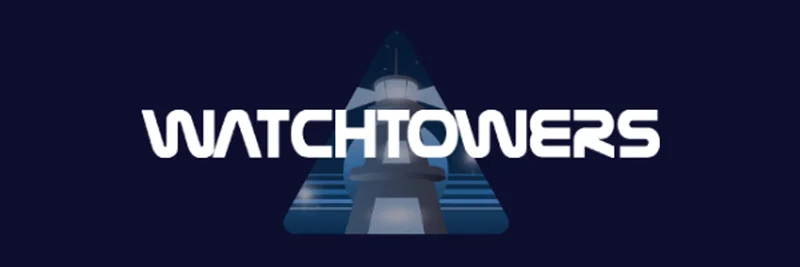TL;DR
- WTSAI is the token powering WatchTowers AI, a platform focused on AI-driven smart contract security and scoring.
- Despite some confusion online, meaningful trading and project activity are centered on Ethereum (commonly vs. WETH on Uniswap).
- Early security checks are mixed: some tools show no critical red flags, others point to issues you should review.
- If you trade it, consider using trusted venues like Uniswap and analytics dashboards. For a clean token page with trading access, check GMGN.AI’s WTSAI page.
What is WatchTowers AI?
WatchTowers AI is building an AI-first toolkit to evaluate smart contracts and tokens. Think of it as an always-on copilot that:
- Reviews contract code for vulnerabilities (code security).
- Measures decentralization (e.g., holder distribution, admin controls).
- Assesses token “age” and evolution (creation/trajectory).
- Aggregates public information from 50+ listing sites and social channels to score visibility and credibility (information scoring).
The idea: produce a clear, visual score that helps users gauge security and project quality at a glance.
The Role of WTSAI
WTSAI is the utility token for the WatchTowers AI ecosystem. Within the platform’s roadmap, it’s positioned to power access to advanced features and security intelligence, and to tie together the project’s AI-driven evaluation stack.
Key utilities highlighted by the team’s materials include:
- Code Security analysis: AI-driven reviews to flag risky patterns and logic.
- Decentralization metrics: Holder distribution and governance risk checks.
- Token creation/age insights: Historical context and lifecycle trends.
- Information scoring: Broad web and social footprint analysis.
If you trade or build with meme tokens, tools like these can help you avoid common pitfalls such as honeypots, hidden mint functions, or lopsided admin powers.
Ethereum, Not BNB: Clearing Up Chain Confusion
You might see references to BNB Smart Chain (BSC) for the same address. However:
- The address 0x4ba2f595539bd3e9b1675bc3a337497890e8a70e is primarily active on Ethereum with WTSAI/WETH trading on decentralized exchanges (notably Uniswap).
- Popular trackers like DEX Screener and DEXTools surface WTSAI activity on Ethereum.
- A look-up on BscScan shows limited, inconclusive data tied to this ticker on BSC.
Bottom line: treat Ethereum as the canonical network for WTSAI.
Trading and Market Snapshot
WTSAI has seen volatile activity on Ethereum DEXs, often in a WTSAI/WETH pair. At one point, public trackers showed:
- Liquidity around $192K (pair-dependent)
- FDV and market cap near $1.2M
- 24-hour volume close to $1.0M
- Large intraday swings reported by dashboards like DEX Screener
These figures can change rapidly. Always check live data before trading.
Where to trade and track:
- Uniswap: the most common spot to swap WTSAI vs. WETH. Start at Uniswap.
- GMGN.AI: curated token page with trading access and live intel: GMGN.AI WTSAI.
- DEX analytics: check DEX Screener and DEXTools for liquidity, price action, and pair details.
Pro tips:
- Verify the contract: 0x4ba2f595539bd3e9b1675bc3a337497890e8a70e.
- Set sensible slippage and review liquidity depth to avoid price impact.
- Watch for taxes or transfer restrictions that can affect execution.
Security Checks and Risks
Early automated checks (as observed via community-favorite tools) show a mixed picture:
- Go+ Security: no issues flagged at the time of review.
- Quick Intel: 1 issue noted (details vary—always inspect).
- Token Sniffer: 45/100 score (mid-range suggests caution).
- Honeypot.is: no honeypot flagged at the time of review.
How to interpret:
- “No issue” from one tool doesn’t guarantee safety. Different scanners test different vectors.
- A mid-range Token Sniffer score means you should read the fine print: ownership, mint authority, blacklists, fee settings, and liquidity locks.
- Always check if the contract is verified on Etherscan and whether renounce/lock events are clearly documented.
Practical safety steps:
- Limit approvals; manage allowances with Revoke.cash.
- Start small, then scale if fundamentals check out.
- Cross-reference multiple scanners and manual code reviews where possible.
How WatchTowers AI’s Scoring Helps
Security in crypto often fails at the edges—admin keys, opaque tokenomics, or social manipulation. WatchTowers AI’s multi-factor scoring tries to counter that by:
- Code integrity: catching risky patterns that casual reviewers miss.
- Decentralization checks: highlighting centralization risks (e.g., whale control).
- Historical context: understanding how long a token has existed and evolved.
- Information breadth: weighing a token’s visibility and consistency across listings and socials.
For meme token traders, these signals can be the difference between catching a sustainable narrative and getting trapped in a short-lived hype cycle.
Due Diligence Checklist
- Confirm the network: Ethereum is the primary venue for WTSAI.
- Verify the contract: 0x4ba2f595539bd3e9b1675bc3a337497890e8a70e on Etherscan.
- Review security tool outputs (and their limitations).
- Check liquidity locks and team wallets.
- Track live pairs on DEX Screener or DEXTools.
- If trading, consider Uniswap and the GMGN.AI WTSAI page for fast access and monitoring.
- Follow official channels for updates and roadmap:
- Website: watchtowers.ai
- X (Twitter): @WatchTowersAI
- Telegram: WatchTowersAI
Final Thoughts
WTSAI is not your typical meme coin—it’s tied to a utility-driven project aiming to raise the bar for smart contract safety with AI. The opportunity here is practical: better tools for risk management in a market where speed and transparency matter.
That said, early signals are mixed, the market is volatile, and information can shift quickly. Treat all automated scores as starting points, not verdicts. Double-check everything and size positions responsibly.
This article is for informational purposes only and is not financial advice. Always do your own research.



